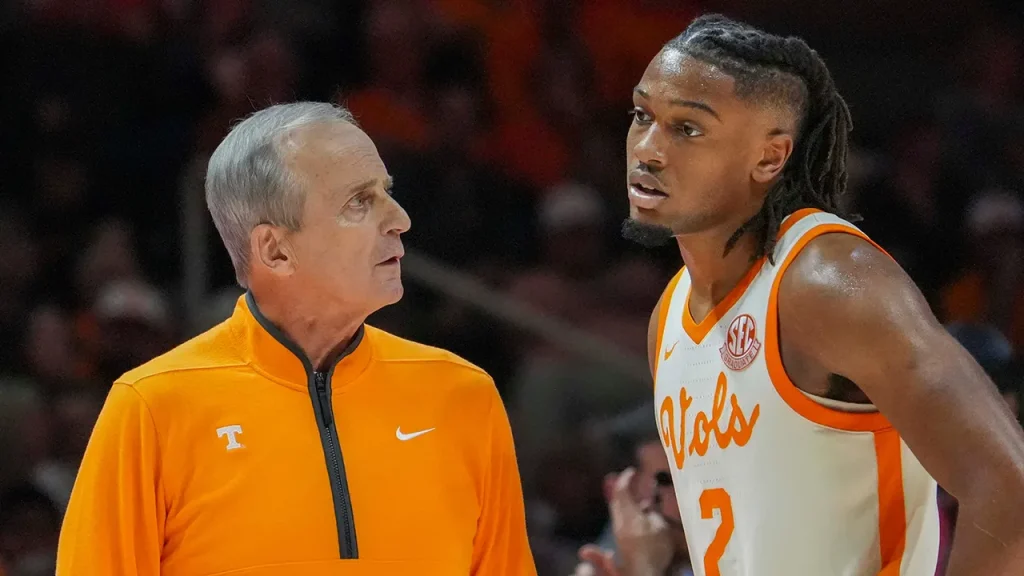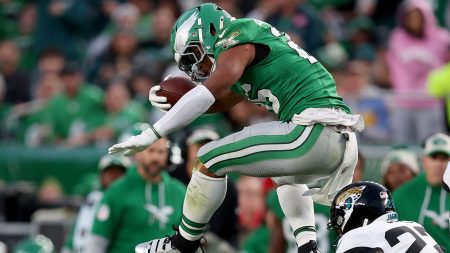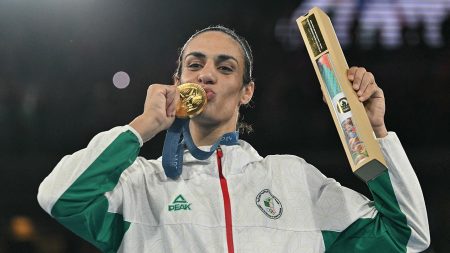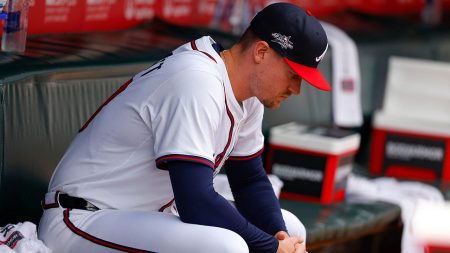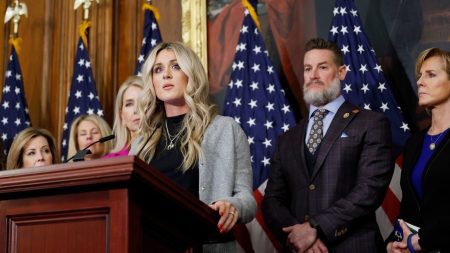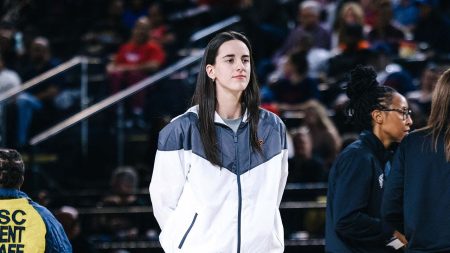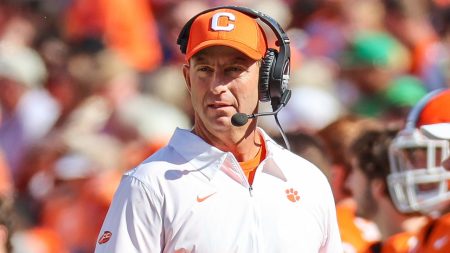Rick Barnes, the head coach of the Tennessee Volunteers men’s basketball team, made headlines recently for his candid explanation of why he benched the team’s leading scorer, Josiah-Jordan James (not Chaz Lanier as mentioned in the original text, assuming this is an error), during their victory against the Texas Longhorns. Despite James contributing 10 points in 34 minutes of play in the closely contested 74-70 win, Barnes stated unequivocally that he removed James from the game at the beginning of the second half due to his failure to take a shot on a play specifically designed for him. Barnes’ blunt assertion that James “is getting paid to do that” – referring to taking the shot – immediately sparked controversy, especially given the current landscape of college athletics where athletes can now profit from their Name, Image, and Likeness (NIL).
The context of Barnes’ remark lies within the evolving dynamics of college sports. Previously, student-athletes were strictly prohibited from receiving any form of compensation beyond scholarships. However, the introduction of NIL deals has revolutionized the collegiate athletic landscape, allowing athletes to monetize their personal brand through endorsements, sponsorships, and other avenues. This new era has brought with it a complex interplay of financial incentives, athletic performance, and coaching strategies. While Barnes’ comment might appear insensitive when viewed in isolation, it reflects the changing expectations and responsibilities that come with the NIL era. Athletes, especially those with lucrative NIL deals, are now viewed not only as students representing their universities but also as brand ambassadors with a specific role to play on the court.
Josiah-Jordan James, reportedly boasting a substantial NIL valuation (the provided text mentions a $1.7 million valuation for “Chaz Lanier,” again assuming this is an error and referring to James), falls squarely into this new category of student-athlete-entrepreneur. While the exact details of his NIL agreements are not publicly available, it is reasonable to assume that some of these deals are contingent upon his performance and visibility on the basketball court. Barnes’ comment, therefore, can be interpreted as a recognition of this reality, emphasizing that James has a responsibility to fulfill the expectations associated with his NIL contracts, which inherently includes performing on the court according to the team’s game plan.
However, it’s crucial to understand the broader context of Barnes’ statement beyond just the financial aspect. His subsequent comments highlight that scoring is not the sole criterion for James’ contribution to the team. Barnes emphasized the importance of James developing other aspects of his game, such as screening, cutting, and off-ball movement. This suggests that Barnes’ frustration stemmed not solely from a missed scoring opportunity, but also from a perceived lack of engagement in the overall team strategy. It is plausible that Barnes used the “getting paid” remark as a pointed reminder to James about the broader expectations placed on him as a key player, both on and off the court, which go beyond simply scoring points.
The incident underscores the delicate balancing act coaches now face in the NIL era. They must navigate the traditional responsibilities of coaching and player development while also acknowledging the new financial dynamics that influence their athletes’ decisions and motivations. While Barnes’ comment may have been overly blunt and sparked debate, it opens a crucial conversation about the changing landscape of college sports. It raises questions about the appropriate level of influence NIL deals should have on coaching decisions and the evolving relationship between coaches and athletes in this new era of compensated amateurism. Furthermore, it highlights the need for clear communication and understanding between coaches and players regarding expectations, roles, and responsibilities within the team, which now include the complexities of NIL deals.
Beyond the immediate controversy, this incident provides a valuable case study for the future of college athletics. As NIL deals become more prevalent and potentially more lucrative, universities, coaches, and athletes will need to establish clear guidelines and expectations to ensure that the pursuit of individual financial gain does not compromise team unity and strategic goals. Open communication, mutual respect, and a shared understanding of the evolving roles and responsibilities of all parties involved will be essential for navigating this new era in college sports. Barnes’ candid comment, though potentially controversial, has forced a crucial conversation into the open, a conversation that will continue to shape the future of collegiate athletics as it grapples with the implications of NIL.




